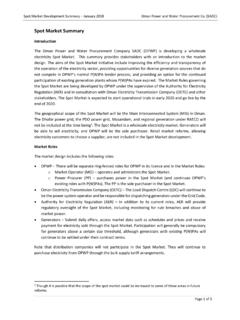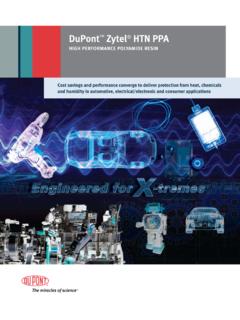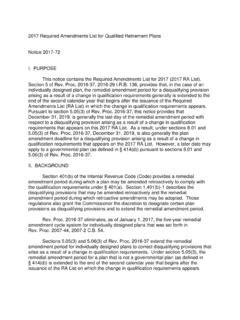Transcription of OpenChannel Solid State Drives NVMe Specification
1 open channel Solid State Drives nvme Specification Revision April 2016 Please write to Matias at for collaboration Table of Contents 1. Introduction Definitions physical media open channel Solid State drive media manager target Logical Unit Number (LUN) Physical Page Address (PPA) Theory of Operation Overview Hardware Architecture 2. Physical Page Addressing Admin Commands Command Set Identification Device Identification Get Block Information Command and Response Set Block Information Command and Response Command Set Commands Physical Write Command and Response Physical Read Command and Response Physical Write Raw Command and Response Physical Read Raw Command and Response Command Completion Error Codes Status Field Error Codes Device Translation Map SSD Commands Get Logical to Physical Translation Table (EAh) Hybrid Page Address Write (81h) Hybrid Page Address Read (02h) 1.
2 Introduction NVM Express ( nvme ) and prior revisions define a register level interface for host software to communicate with a non volatile memory subsystem over PCI Express ( , nvme over PCIe). This Specification defines a Physical Page Address Command Set extensions to the nvme Specification that enables operation with devices that expose their physical media to the host. The document contains the definition for identifying geometry and data commands to control NAND flash behind an open channel Solid State drive controller. Definitions physical media The underlying physical non volatile memory that is attached to the nvme controller.
3 Typically assumes NAND flash, but is not limited to such. open channel Solid State drive Used to refer to Solid State Drives that allow the host to understand and manage the physical mapping within a Solid State drive . media manager A software unit that abstracts the physical media characteristics for above layers to consume. target A software unit that exposes the physical media in one or more ways. For example as a block device, file system, key value, or object based interface. Logical Unit Number (LUN) Used to refer a single parallel unit within the storage media. A single SSD may contain tens or hundreds of these LUNs.
4 Physical Page Address (PPA) Used to define an address on the physical media. The PPA follow the device PPA format that represents the structure of the PPA. Theory of Operation Overview An open channel SSD is a device that shares responsibilities with the host to implement and maintain functionalities that a traditional SSD keeps strictly in firmware. By moving traditional SSD responsibilities to the host, I/Os latencies can be significantly more predictable. The added responsibilities allows host software to adapt its data placement, garbage collection and I/O scheduling algorithms to a given user I/O workload. Traditional, these optimizations are applied on the device side of the storage interface and hidden behind a narrow storage interface, which prevents significant optimizations and algorithms to change during run time.
5 Storage Software Stack Figure 1 depicts the Linux host architecture for open channel SSDs, also known as LightNVM. It consists of three fundamental components: LightNVM compatible device drivers, media managers, and targets. Figure 1: Overview of open channel SSD host architecture as implemented in the Linux Operating System. Device drivers: A storage device driver implements support for the open channel SSD Physical Page Address command set. The command set includes (i) identify structure, used by the host to discover available features, extensions, and characteristics of an open channel device and (ii) and physical data commands to communicate efficiently with the storage non volatile media.
6 Media Manager: The media manager abstracts the underlying physical media by hiding its constraints and access details. It is responsible for (i) name mapping between vendor specific and generic addressing format, (ii) device specific SSD State management (if not implemented at the device side), and (iii) recovery to guarantee durability when manipulating the metadata associated with SSD State management. A media manager acts as a mediator between physical media, and users, abstracting away media complexities. The LightNVM general media manager implements minimal block management and lets targets or user space applications perform the actual FTL.
7 It is possible for a media manager to implement the whole FTL and manage user space interfaces. For example, a media manager could expose a block device similar to a traditional block storage device. Such a media manager would manage functionalities such as data placement, garbage collection, and block management. Targets: When using the general media manager, targets implement FTL functionality ( , translation logic, data placement, or garbage collection). They also expose a storage interface to user space. Examples of such interfaces include block devices, and key value stores, or object stores. Target and device (media manager) division, grouping and assignments are flexible in such a way that one device can be split and assigned to multiple targets or multiple devices can belong to one target.
8 Additionally, LightNVM connects to user space through liblightnvm which exposes a get/put block interface for applications to implement own application managed FTLs. Hardware Architecture Figure 2 depicts an example hardware architecture for open channel SSDs. The SSD controller consists of a host interface controller, NAND controller, DRAM controller and general purpose CPUs. The dotted lines signify that when no internal firmware is implemented, the CPUs and DRAM are not strictly necessary. Figure 2: Overview of open channel SSD architecture. open channel SSDs expose a series of Logical Unit Numbers (LUNs), through NAND Flash, representing a unit of parallelism on the device.
9 Through the open channel SSD interface, the host can determine the configuration and implement the necessary logic to drive the physical media. 2. Physical Page Addressing This section defines the Specification of Physical Page Addressing (PPA) command set. It consists of two parts: admin commands and physical media commands. The admin commands are used to communicate geometry of the device and the physical media commands are used to access the physical media within a device. This Specification defines a command set that enables the host to drive open channel SSDs. This Specification supplements nvme Specification revision Admin Commands The physical page addressing command set defines three new admin commands to enable the host to enumerate the configuration of the device and administer the internal bad block table of a device.
10 Opcode Opcode Opcode (07) (06:02) (01:00) nvme Opcode O/M Command Generic Function Data Transfer 1b 110 00b 10b E2h M Device Identification 1b 111 00b 01b F1h O Set Bad Blocks Table 1b 111 00b 10b F2h O Get Bad Blocks Table Table 11: Opcodes for Admin Commands PPA Command Set Specific All commands are implemented using the regular nvme command structure, as described in the nvme Specification , under the section Submission Queue Entry Command Format . Non specified fields follow the standard submission queue entry fields. Command Set Identification A device is identified by its PCI IDs. Currently, the following PCI IDs are reserved and used for identification: Device Description QEMU nvme LightNVM support is available when device matches PCI Vendor ID (0x1d1d), Device ID (0x1f1f) and the first byte (value 0x1) in the vendor specific bits of the namespace identify structure is set.






